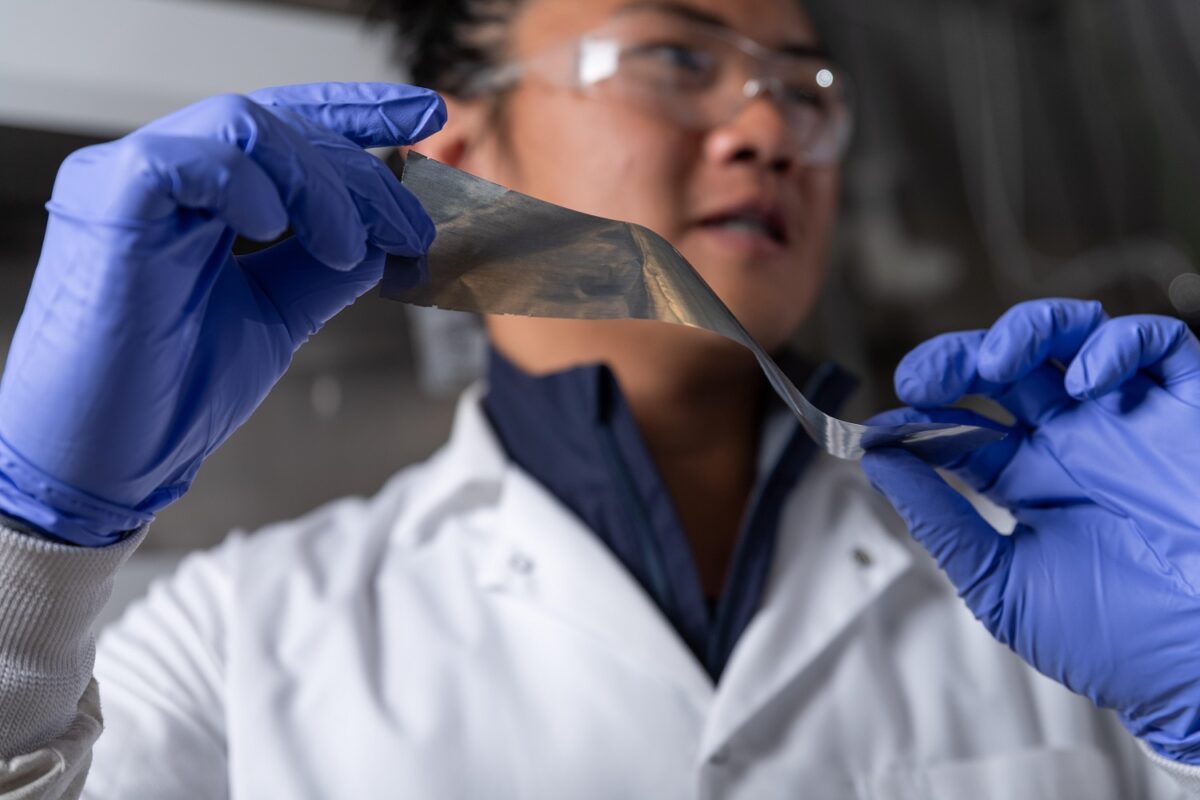From pv magazine global
When used in a conventional lithium-ion battery, aluminum fractures and fails within a few charge-discharge cycles, due to expansion and contraction as lithium travels in and out of the material. The material’s potential application in batteries was investigated in the past, but to no avail.
Now, researchers at the Georgia Institute of Technology in the United States have developed lab-scale lithium-ion battery cells with non-pre-lithiated aluminum-foil-based negative electrodes with improved energy density and stability.
“This is a story about a material that was known about for a long time, but was largely abandoned early on in battery development,” said Associate Professor Matthew McDowell. “But with new knowledge, combined with a new technology — the solid-state battery — we’ve figured out how we can rejuvenate the idea and achieve really promising performance.”
Instead of using pure aluminum in the foils, which would fail rapidly when tested in batteries, the research team added small amounts of other materials to the aluminum to create foils with particular “microstructures,” or arrangements of different materials. They tested over 100 different materials to understand how they would behave in batteries.
The new aluminum foil anode demonstrated markedly improved performance and stability when implemented in solid-state batteries, as opposed to conventional lithium-ion batteries. The lab-scale cells deliver hundreds of stable cycles with practically relevant areal capacities at high current densities (6.5 mA cm−2)
“One of the benefits of our aluminum anode that we’re excited about is that it enables performance improvements, but it also can be very cost-effective,” McDowell said. “On top of that, when using a foil directly as a battery component, we actually remove a lot of the manufacturing steps that would normally be required to produce a battery material.”
The project began as a collaboration between the Georgia Tech team and Atlanta-based aluminum manufacturer and recycler Novelis. The researchers are now working to scale up the size of the batteries to understand how size influences the behavior of aluminum.
This content is protected by copyright and may not be reused. If you want to cooperate with us and would like to reuse some of our content, please contact: editors@pv-magazine.com.









By submitting this form you agree to pv magazine using your data for the purposes of publishing your comment.
Your personal data will only be disclosed or otherwise transmitted to third parties for the purposes of spam filtering or if this is necessary for technical maintenance of the website. Any other transfer to third parties will not take place unless this is justified on the basis of applicable data protection regulations or if pv magazine is legally obliged to do so.
You may revoke this consent at any time with effect for the future, in which case your personal data will be deleted immediately. Otherwise, your data will be deleted if pv magazine has processed your request or the purpose of data storage is fulfilled.
Further information on data privacy can be found in our Data Protection Policy.